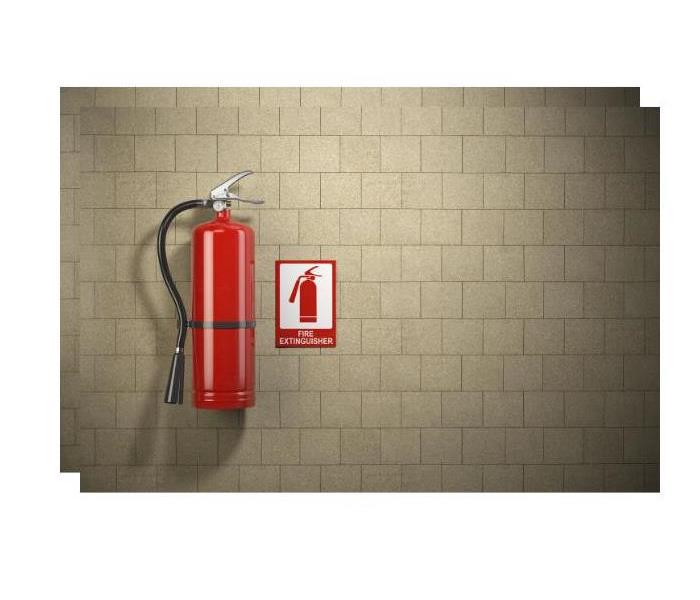Know Your Fire Extinguisher
1/16/2020 (Permalink)
Fire extinguishers are common and hopefully, most of us have them on hand. One thing we may not think about is whether we are using the correct fire extinguisher for that fire classification. For example, you would not use the same Class K fire extinguisher (kitchen) in your garage that would likely need a Class B fire extinguisher. I have put together a list for you to quickly assess the right fire extinguisher for you in the appropriate area of your home, work, or garage.
There are 5 classes of Fire Extinguishers. Each class is designed to put out fires depending on the fuel that is being burned.
Class A - Is used to fight a fire burning general flammable materials such as fabric, paper, or lumber.
Class B - This fire extinguisher is designed to fight combustible liquids like motor oil, automotive fuel, and paint devices.
Class C - Electric current and devices
Class D - Flammable metal
Class K - Kitchen flammables such as grease or fat used in a frying pan or deep fryer
Fire Extinguisher Types
Below are the most widely available types of devices used to extinguish fires, along with the class of fire on which each should be used.
Water
- Class A
This is the most widely used agent for firefighting. Unfortunately, its extinguishing capabilities are limited to simple fires in which standard combustible materials are burning Foam. - Classes A, B
The agents in these fire extinguisher types are effective on both solids and combustible fluids. Anything sprayed with one of these devices must be cleaned thoroughly. Remnants will then evaporate
Multi-Purpose Dry Chemical
- Classes A, B, C
Mono ammonium phosphate is the agent used in this type of extinguisher. This chemical can damage anything it touches, so it is important to wash away all residue of the agent as soon as possible following its use.
Regular Dry Chemical
- Classes B, C
This extinguisher uses sodium bicarbonate as its agent. Sodium bicarbonate will not damage your property and is completely safe to use. Cleaning away the chemical is simple, but of course its usability is more limited than the multi-purpose option.
Carbon Dioxide
- Classes B, C
The agent in this type of extinguisher sucks away the oxygen that is enhancing the flammability of the environment. These extinguishers do not spray as far as others do. It is unnecessary to wash affected areas afterward because the chemical is safe and no traces remain after its usage.
Halotron
- Classes A, B, C
The agent in this extinguisher is a fluid that vaporizes when released from its container. Like carbon dioxide devices, these extinguishers are green-friendly and will not require cleaning after usage.
Purple K Dry Chemical
- Classes B, C
This type of fire extinguisher uses the agent potassium bicarbonate. The chemical will not damage belongings or the surrounding atmosphere. It does, however, need to be swept up or flushed away after the device is used.
Wet Chemical
- Class K
The agent used in this type of fire extinguisher is a complex agent with the compound potassium acetate as its basis. It mists any inflamed cooking fluids and fats, also affecting any gases that are being released by the fire.
Dry Powder
- Class D
There are a range of dry powder devices. If your atmosphere contains metals that can catch fire, be sure you are using an extinguisher specific for the metal in your environment.
Our first priority is your safety. Prevention is key to eliminating or at least reducing your loss. We hope you find this information helpful and useful in preventing loss in your home and work.
As always, if disaster strikes, SERVPRO of Springfield, Sangamon, Morgan, Cass, and Montgomery Counties is always here for you. We can be reached 24/7 at 217-528-7775.





 24/7 Emergency Service
24/7 Emergency Service